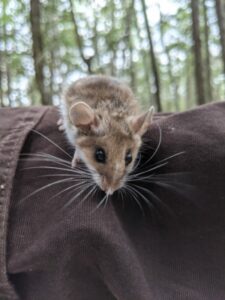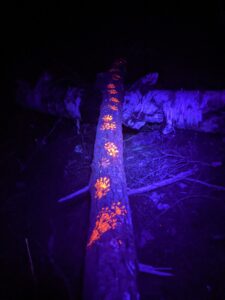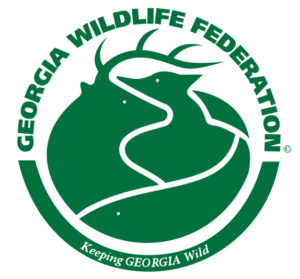A conversation between two small mammal researchers: Dr. JT Pynne (Georgia Wildlife Federation) and Ivy Yen (PhD Student at the University of Maine).
Most plants grow from seeds, but how do those seeds get there? Seed dispersal is the method by which plants spread out their seeds to populate an area. Seed dispersal comes in many forms, from hitchhikers riding along pants legs to birds eating and passing seeds.
Small mammals like mice, squirrels, voles, gophers, and plenty of others are responsible for seed dispersal in their own ways. Herbivores may eat the seeds or they might store the seeds somewhere in a cache. This concept is well known because of the example provided by forgetful squirrels and their buried acorns.
Forest regeneration (particularly oaks) is a big issue right now with habitat loss, land use change, and climate change causing a decrease in regeneration. As it turns out, the decisions of small mammals can drastically affect forest regeneration.
Researchers at the University of Maine are conducting pioneer research incorporating behavior and wildlife decision processes into how small mammals affect seed dispersal and thus forest regeneration. I had a conversation with PhD Student Ivy Yen in Maine about some of the awesome research they’re doing on small mammals and their forestry impacts.
What species are you looking at and why?
We use small mammals as a study system for a variety of reasons. Primarily, they are very abundant, which makes them a fantastic model to study across different systems and allow us to generalize across populations. Small mammals also serve an incredible ecological function by dispersing seeds and play a large role in maintaining forest ecosystems. Studying what affects selection and dispersal in small mammals give us insight into exactly how they affect forests and how their relationship may be altered across changing landscapes.
Because of these things, they’re a great natural system to study individual variation. Just like humans, there is variation in body size, the kinds of foods individuals prefer, where they like to live, and how often they put themselves in risky situations. In our lab, we focus on behavioral variation (personality). Along with many other researchers, we are also interested in individual variation and are starting to uncover how important it is to consider individuals when you are looking at a population.
Where is this research being conducted?
We work in the Penobscot Experimental Forest, which is located in Central Maine and managed conjointly by the USFS and the University of Maine. This site is really interesting because it is made up of dozens of different forest units that have been treated with different forestry management practices. A lot of research goes on in these woods, and we’re really grateful to be able to add perspective on the role of small mammals in their regeneration work.
 How are you tracking them?
How are you tracking them?
We set up trail cameras so that we can record who is coming to select seeds and what they decide to take. We track seeds by painting them and setting fluorescent powder around them so that we can follow the trails that small mammals take back to their burrows or cache sites! This takes quite a bit of night-owlery and preparation, but its very rewarding. As you follow their trail, you get to see how small mammals move in the environment. What kinds of structures do they use, what kinds of places do they like to store their seeds? It’s fun to be able to get a little peek into how these little animals interact with the world.
Have you come across any other fluorescent flora or fauna while tracking?
Absolutely! The world seems to be so full of colors that we can’t see with the naked eye when you’re out at night with a UV flashlight. Many species of lichen and fungi fluoresce blue and green. I didn’t find out until recently that flying squirrels fluoresce, but now I am really looking forward to the next chance I see one!
What have you discovered so far?
We were able to capture many selection and dispersal videos and are still compiling the results, but Allison Brehm, PhD, did a similar study in 2021 and found that different personalities interacted with seeds very differently. Bold individuals were much more likely to positively contribute to acorn dispersal, while timid individuals were more likely to constrain dispersal. But in smaller seeds, the story was the opposite. I am hoping to use my current study to tease apart the traits that small mammals are responding to such as seed size, the hardness of the shell, and the nutritive content of the seed.
How and why is behavior important?
Behavior is vitally important it is the interface between the physical body and the physical world. What’s really interesting is that individuals might receive the same information but respond in opposite ways. One example my advisor loves to give is how at the same party you can have social butterflies as well as wallflowers. From a conservation framework with the goal of maintaining healthy and stable ecosystems, we need to understand how much behavior can vary, what triggers them, and the ecological consequences.
How can this research be used in other forest systems along the East Coast?
This is a great question. One main point of investigation in our lab is understanding how small mammals are going to respond to changing forests under climate change. Current predictions show that the habitable range of many tree species is shifting northwards across the East Coast and will encounter populations of small mammals that have not previously seen them before. This is a strange, new world where individuals decide to select or to ignore these “novel” seeds which may determine whether these tree species will be able to persist.
Maisie Merz, another PhD student in Alessio Mortelliti’s lab, is looking at this exact question and studies seed dispersal in gray squirrels across the East Coast from southern Maine, Massachusetts, to Connecticut.
 What future research can be added to answer even more questions?
What future research can be added to answer even more questions?
The work we are doing is really just the first chapter of a large volume on how small mammals impact forest ecosystems. If you think about it, what seeds small mammals choose and how far and where they decide to store them will affect the likelihood that the seed will germinate. But there are so many more steps in between. How often are seeds moved again? How often are they stolen by other individuals? (Brigit Humphreys, a masters student, is looking into this now.) How often is a seed forgotten and allowed to germinate? Do these patterns hold with changes in the population, the community, human activity, and the climate?
Any other conclusions?
Although small, small mammals play big roles in forest ecosystems!
Thanks to Ivy for answering these questions! Small mammals are much more important than we might think. They also have really cool behaviors and adaptations that cause massive changes in the forests of the East Coast. Next time you see a deer mouse or a gray squirrel, think about the impact they’ve had on the trees around you.

Recent Comments